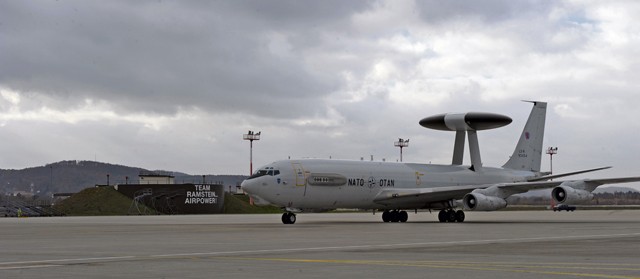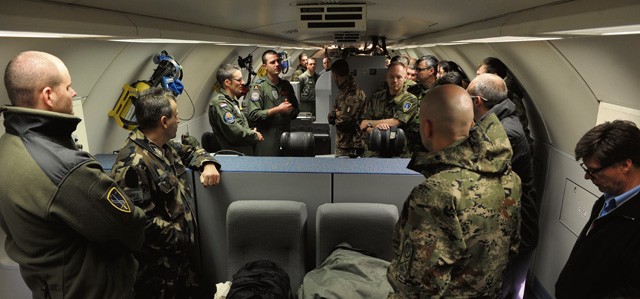
As part of its mission to enable theater and strategic airpower, Ramstein often acts as host to other U.S. and allied units and aircraft.
On Nov. 18, Ramstein welcomed an E-3A Sentry airborne warning and control system aircraft assigned to the E-3A Component at NATO Air Base Geilenkirchen, Germany, and its crew for a visit.
The trip was initiated due to the NATO Airborne Early Warning and Control Force’s organizational restructure, which is scheduled to transfer operational control of the E-3A Component to NATO Allied Air Command in fall 2016.
“This is a special visit to interface with our new parent organization to show them what we do and what we bring to the fight,” said U.S. Air Force Maj. Stephen Evelyn, E-3A Component AWACS weapons controller and fighter allocator.
Though the unit will fall directly under AIRCOM authority, the plan is to still operate out of Geilenkirchen.
The E-3A Component is currently one of two operational elements of the NAEW&CF. As NATO’s first integrated, multinational flying unit, they provide surveillance, airborne command, control and communication for NATO operations and assurance of allied nations.
“The missions are very similar to what I flew in the (U.S.), the difference being the international environment that really sets NATO AWACS apart as a really special unit,” Evelyn said. “There are not many units, other than headquarters or staff units, that (have) joint coalition missions.”
Evelyn made note of the opportunity the E-3A Component provides in working with members from other countries, whose views on airpower are sometimes different than their own and derive from their countries’ experiences.
“Working in the international environment and with our NATO allies is really the coolest thing about working NATO AWACS,” Evelyn said.
The visit is scheduled to include tours of the AWACS and a flight with AIRCOM leaders to give them a firsthand perspective of the capabilities of the aircraft and unit in their task to create and maintain theater awareness.








